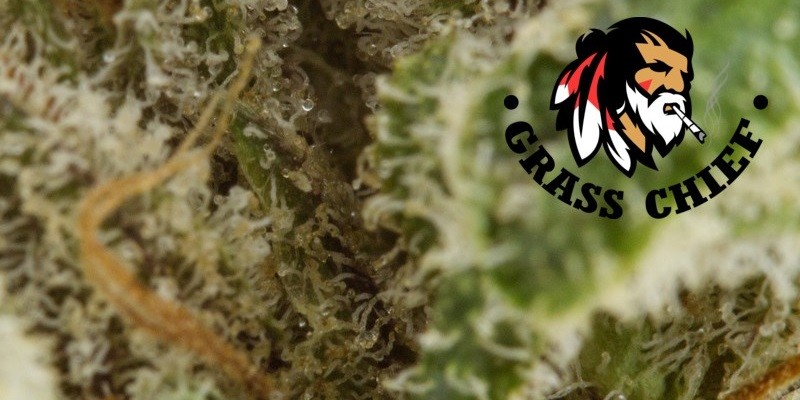Guide
What Goes into Making Cannabis Ready for Consumption?
Photo reference: Gorilla Glue #4 – Batch June 18th 2019 Macro Image.
Here’s what you know: that at the end, cannabis Cannabis sativa, the plant, becomes the consumables (which are used for recreational as well as medical purposes) and the other parts are used for in industrial purposes; these include bast and hurd which are processed in to fibers, oils, pulp, paper, canvas and so on. However, what you may not know is this: how does Cannabis sativa finally become what you consume? What parts of the plants are used and what processes does it go through?
Originating from Central Asia and India whose cultivation dates back to about 3000 years ago from Chinese records, the plant is a very recognizable one with leaves arranged palmate (it looks like fingers of a palm spread apart). With no specific soil requirement, they are grown considering mostly soil pH which should tend to neutral or slightly alkaline. The plant is usually unisexual with each individual being either male or female. Plants with both parts are found sometimes in recurrent generations.
While the industrial use of cannabis requires just the plant seed for the production of fiber and oil, the consumable and medical cannabis are grown for the flower buds which are gotten majorly from the female plants. These female flowers are abundant in tetrahydrocannabinolic acid THCA which is a THC precursor, the chief cannabinoid with therapeutic, medicinal and recreational purpose. The leaves of the cannabis plant also contain THCA (1 -2%) which can be extracted.
However, the THCA content of the leaves could be 10 times lower than the content found in the buds. This is not to imply that the male plants grown majorly for industrial use do not contain THCA, it does as well but in much lower quantity with THCA content usually below 1% and the THC content of a cannabis plant needed to exert a psychotropic effect should approximate 1%.
Flushing is done two weeks before harvesting. This involves giving the plants only pure water (pH of 6.2). It is done to allow the plant use up the additional nutrients contained in the buds thereby improving the quality and smoothness of the buds before harvest.
Using the pistil method, the cannabis buds are harvested when the majority of the pistil (hairs) have turned a dark colour from white. Usually, it is done when 60 – 90% of the pistils have turned a dark colour, usually red or brown.
This precise percentage of darkened pistil at harvest is decided based on the desired effect and strain of the final product. For the highest THC levels, it is harvested when about 60 – 70% of the pistil have darkened to a red or brown shade while for a rather relaxed, anti-anxiety effect, the buds are harvested when about 70 – 90% of the pistils have darkened. Alternatively, the trichome method can be used to decide the best harvest period. In this method, a Jeweler’s loupe or digital magnifier is used to view the trichomes or resin gland for the level of THC. This method is more precise than the pistil method. These trichomes are where the THC is located in the cannabis and the bigger they appear, the more the concentration of THC in the buds.
After a successful harvest, trimming is done. This is the removal of debris including dead and or dying leaves from the branches. Trimming is done using sterilized pruning tools in order to avoid contamination of any sorts.
Every part of the plant that is not needed or useful to achieve the end product is also removed. All fan leaves and small side shoots are also pruned from the plant branches, only the small leafs pumped up with resin glands are left. This is done because these fan leaves and side shoots lack THC and are therefore useless. Larger branches left on the plant are also cut off into tiny stalks.
Only the best part of the plants are used in making the final product which is cannabis. Sometimes, trimming is done just before harvesting, the larger leaves are removed in the last days preceding the harvest.
The next step after trimming is the initial drying which is done as a precursor to curing. Once the debris, fan leaves and excess branches have been trimmed from the plant, it is then stored in a dry, dark place that has just enough ventilation to allow for proper drying. This is done for one to two weeks depending on the environment. The plants are hung from drying nets or strings.
The longer the process of drying takes, the better for the quality of the plant as it prevents a rather rapid depletion of the organoleptic as well as psychoactive properties. To control the environment and ensure a premium drying rate for the plants, a grow tent can be used to dry the buds hung on drying nets.
These grow tents possess an air extraction system connected to a carbon filter to make sure that no unwanted odour escapes the tent. The grow tent as well ensures a dark environment.
To avoid crumbled buds or powdered buds, the buds are dried to just about 8 – 10% moisture level at an ideal temperature of not more than 20o to avoid evaporation of the most volatile terpenes contained in the buds (this evaporation of terpenes may cause less quality cannabis of milder flavor and may result in sore throats). The drying is also done at 50% relative humidity to ensure proper drying and retention of texture and aroma.
At the end of the processing is curing of the cannabis buds. This is the last step in the processing of cannabis. Yet, it is one of the most important steps, it makes the difference between just another cannabis and award-winning cannabis. Done to maximize the flavor of the cannabis, achieve peak potency and ensure the overall best quality for harvested buds, the leftover leaves and seeds are removed. These leaves and seeds go on to be used for oils, extracts or recipes.
Once removed, the dried buds are kept into selected clean jars or containers and stored in a dark dry place and allowed to dry for a couple of weeks, usually 2 or 3. The longer the buds are cured, the better the quality, taste and burn. The containers or jars are opened for a few minutes, an average of fifteen daily. In these weeks, natural plant processes occur in the buds; the plant material lets off humidity into the surrounding of the jars or containers they are sealed in, the same humidity is then again absorbed. After curing for about two to three weeks, the top quality buds are ready for packaging and consumption.
Proper curing greatly affects the flavor of the cannabis, improving the flavor as it preserves the volatile terpenes in the plants. Not only does it affect the flavor, it as well serves as a preservative method for the end product, allowing it to be stored for a longer period of time without worrying about molds or spoilage.
After the cultivation and harvest of Cannabis, the best parts which are the buds and some of the leaves are separated and these go into the production of marijuana. They are then processed to ensure quality concentration, potency, taste, burn and smoothness and this is the end product that is circulated and sold for consumption to achieve calmness, strength, enjoyment, and excitement.


